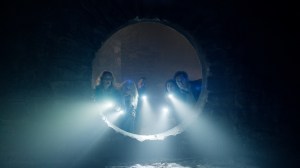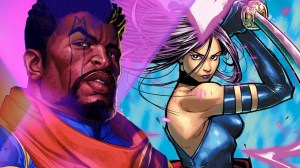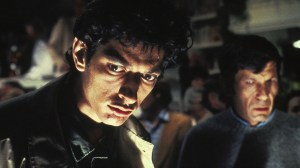Boruto: Naruto Next Generations overcame a lot of early skepticism to justify its own existence as a continuation of the Naruto saga. Despite being somewhat silly and juvenile at the start, Boruto managed to hit its stride around the time of its Chunin Exams arc, and even touched the greatness of Naruto: Shippuden’s best moments with the “Vs Momoshiki Arc”. However, since the Momoshiki Arc aired in episodes 52 – 66 more than a year ago, the Boruto anime has been nothing but filler arcs, and the fandom is quickly getting tired of it. It’s time for the Boruto anime to start adapting the manga once again… and soon.
Videos by ComicBook.com
As stated, the Boruto anime didn’t start off on the strongest foot. Many Naruto fans saw this new chapter of the saga as been a cheesy knockoff of the original Naruto series, and the Boruto character was seen as being bratty and annoying and generally hard for fans to connect with. The “Vs Momoshiki” arc was the moment that bad trend really changed: the Boruto anime put effort behind its animation and action sequences to create one of the best Naruto battles ever, while the actual Boruto character greatly matured and showed promising potential in terms of both attitude and power. Most importantly, the “Vs Momosiki” arc also introduced some tantalizing new mysteries into the series, which set the stage for an exciting future to come.
And yet… that future has not come.
Boruto is now on episode 128, and none of the main storyline set up by the Vs Momoshiki Arc has really been touched. It’s only been in the last few episodes that one of the Otsutsuki villains created for the anime arc (Urashiki) has returned, giving fans at least the hope that something exciting is about to happen again, after more than a year of nothing but filler.
The truth is, though: Boruto has *always* been getting by on what is ostensibly one of the longest stall campaigns we’ve seen. The only reason that there was initial fan support for the anime was because the concept of adult Naruto’s world was nicely introduced in Boruto: Naruto the Movie, which was actually a feature-length version of the Momoshiki Arc. The Boruto manga similarly gained attention by making Momoshiki its first story arc – but unlike the anime, the manga has been paying off the events of that Momoshiki arc, with an exciting new “Kara Arc” that has introduced new allies, new villains, and some game-changing developments for Naruto, Sasuke, and the Hidden Leaf as a whole. The mysterious new villain group Kara has infiltrated Boruto and Naruto’s world; Kara’s warriors have revealed major scientific ninja tool cyber-enhancements to their bodies, while the group’s leader, Jigen, has revealed himself to be the biggest Otsutsuki threat that’s come along yet. That threat is so big, in fact, that Naruto and Sasuke have already been defeated by it, leaving a major target on Boruto’s back.
Up until now, it’s been understandable why the Boruto has been throwing filler episodes and arcs at fans, as the anime’s pace is much faster than the monthly releases of the manga chapters. However, at this point the anime is some 60+ episodes beyond the last manga arc – so now it’s time to once again explore the actual substantive canon the manga is laying out. As the Boruto anime has clearly demonstrated already, it can take the main beats of the manga’s Kara arc and stretch it out into a longer storyline – one that could enhance what the manga has done by providing more backstory on the Kara group and its members, their coveted vessel, Kawaki (the kid from Boruto’s flash-forward opening sequence), and the friendship that gradually develops between Boruto and Kawaki, after the latter comes to stay with Naruto.
At this point, it’s more of a question why Boruto refuses to jump back into the manga storyline – hopefully a question that will soon be answered.
Originally created by Masashi Kishimoto for Shueisha’s Weekly Shonen Jump in 1999, Naruto follows a young ninja, with a sealed demon within him, that wishes to become the leader of his home village. The series ran for 700 chapters overall, and was adapted into an anime series by Studio Pierrot and Aniplex that ran from 2002 to 2017. The series was popular enough to warrant a sequel, Boruto: Naruto Next Generations which is set several years after the events of the original Naruto story and features the children of many of its key characters such as Naruto and Hinata.








